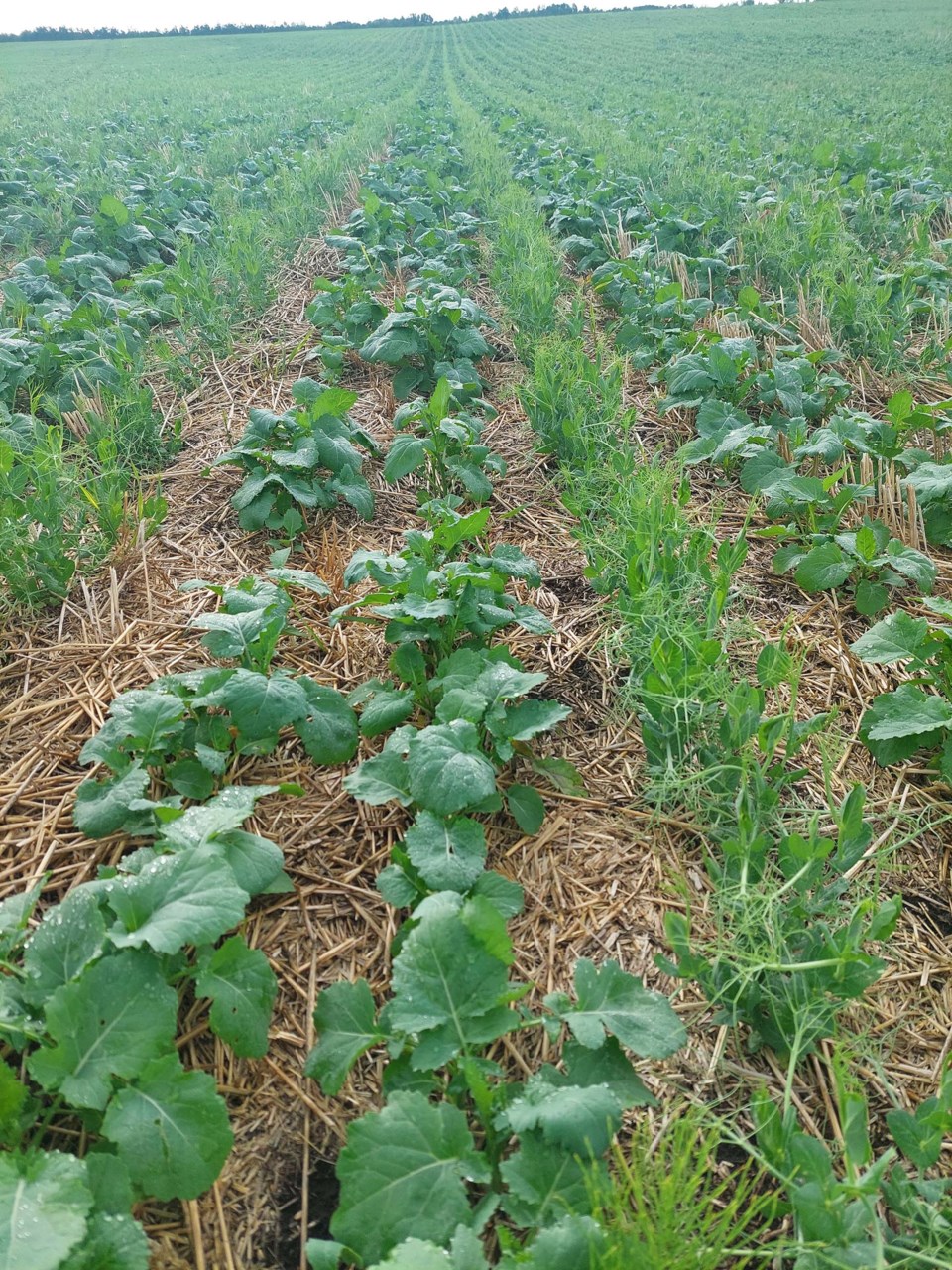How Now Green Cow
How Now Green Cow is examining how global heating how our dinners are shaping, and are being shaped by, the climate crisis. Got a food and climate question? Send it to [email protected] so it can be addressed in a future story.
You might do a double-take if you take a drive past Sturgeon County’s Lakeside Dairy this summer. While the fields around it will be solid squares of colour, the ones there will be a candy-striped mix of yellow canola and white pea flowers — two crops intermixed in a single field.
The peas and canola support each other, which results in more crop per acre at lower cost, said Lakeside Dairy crop manager Steele Perrett. It also means he no longer needs to spray fungicides to protect his peas.
“The savings on that are very large,” he said.
Perrett is one of a growing number of Alberta farmers that do intercropping — a farming practice where you plant two or more crops very close together for mutual benefit. While it’s an ancient idea, research suggests intercropping can help modern farmers grow their bottom lines and shrink their pollution footprint.
Team up to green up
Most modern North American farms lean toward monocultures — acres and acres of a single crop, producing the monocoloured fields often seen around St. Albert. Intercropping sees multiple crops planted very close together, sometimes even in the same rows, for mutual benefit. A classic example is the Three Sisters of maize, squash, and beans planted by many North American First Nations — the maize gets nitrogen from the beans, the beans climb the maize, and the squash prevents weeds, with the three performing better together than they would otherwise alone.
Scott Chalmers has studied intercropping since 2009 with Manitoba Agriculture. His research suggests that intercropping peas and canola can boost yield/acre by up to 62 per cent. The peas provide nitrogen for the canola, reducing fertilizer use, while the canola keeps the peas off the ground and away from ground-based diseases. Pea-canola fields have so few pea aphids that they don’t need pesticides, and so much dense foliage that they out-compete weeds.
Chalmers said intercropped fields actually do better under the extreme weather made more common by global heating. He advises farmers to do intercropping during ultra-wet years (such as the one Manitoba is going through now), as it packs more plants per acre to suck up the excess water. In drought years, having different crops with different roots (such as shallow-root peas and deep-root canola) improves the odds that at least some of your crops will survive.
Intercropping tends to be a bigger advantage on organic farms than conventional ones, as conventional farmers can use chemicals instead of plants to address bugs and nutrients, said Martin Entz, who has studied intercropping as the Jarislowsky Chair in Natural Systems Agriculture for Climate Solutions at the University of Manitoba.
While intercropping can improve carbon storage in the soil, Entz said its biggest climate advantage comes through fertilizer reduction.
“Nitrogen fertilizer use is one of our biggest climate problems in grain agriculture,” he said, and the biggest source of greenhouse gas emissions on a grain farm.
Nitrogen fertilizer use and production is the second biggest source of heat-trapping pollution on the farm after cattle, the National Farmers Union reports. These fertilizers are produced by burning lots of natural gas, creating CO2, and leach out of soils as nitrous oxide (N2O), which causes 265 times more warming than CO2 per pound.
Intercropping with legumes can cut a field’s fertilizer needs by about half, Entz said. Legumes make nitrogen naturally, and crops planted next to them can steal/borrow these nutrients to grow.
Worth it?
Intercropping does take more work than regular farming, Perrett and Chalmers said. You have to figure out what crops to combine, how best to combine them, and run them through a seed-cleaning plant to separate them at harvest. Some crop insurers won’t cover intercropped fields, and some customers might refuse to buy intercropped grains, especially if one of the crops is a potential allergen like soybeans.
“You have to pay the bills,” Chalmers said, and unless intercropping can boost your yields by at least 25 per cent, it might not make economic sense to do it.
Entz said intercropping was ideal for organic farms, as it aids in weed and nutrient control, and could also help a backyard garden. He encouraged farmers to talk to others doing intercropping to see if it was right for them.
It took years of experimentation to get used to it, but Perrett said intercropping has made his soil more productive and his fields cheaper to run.
“This is a way to have your farm be more profitable.”




